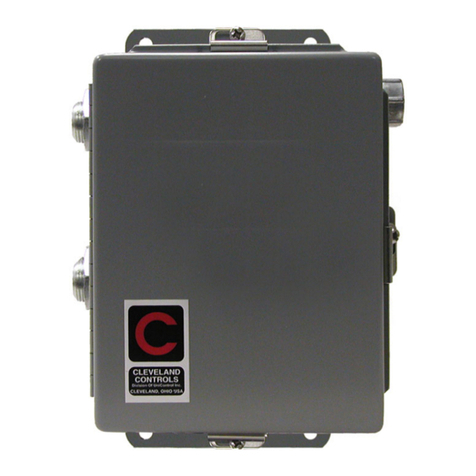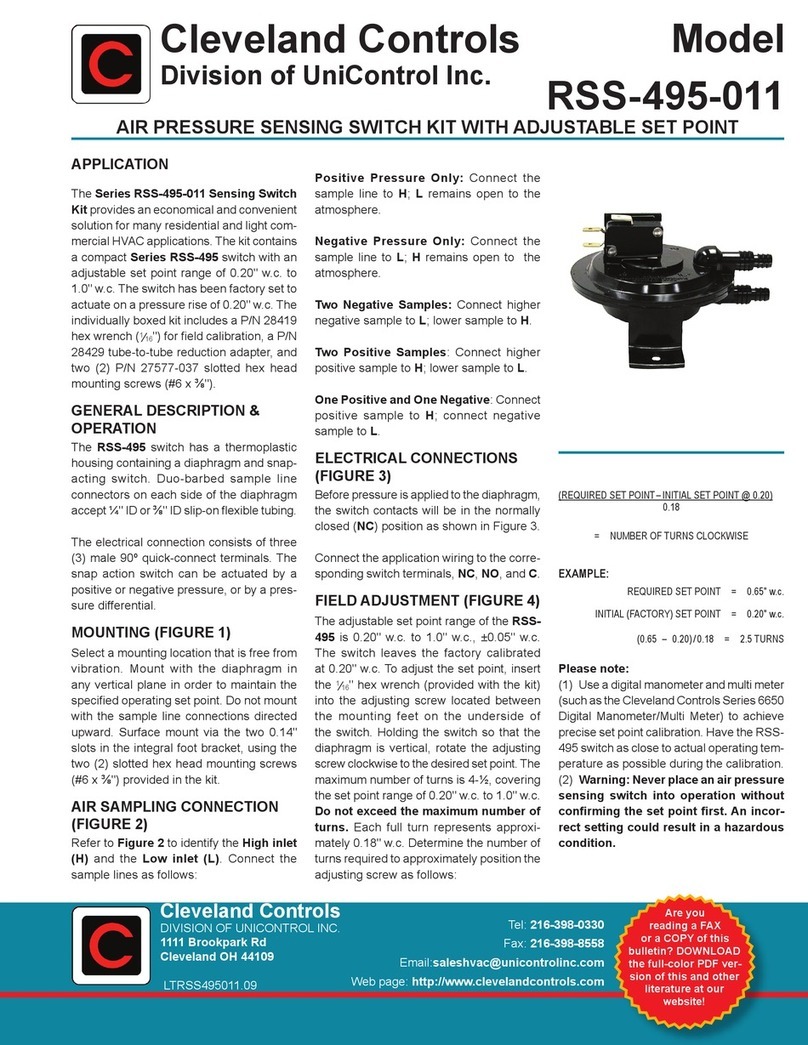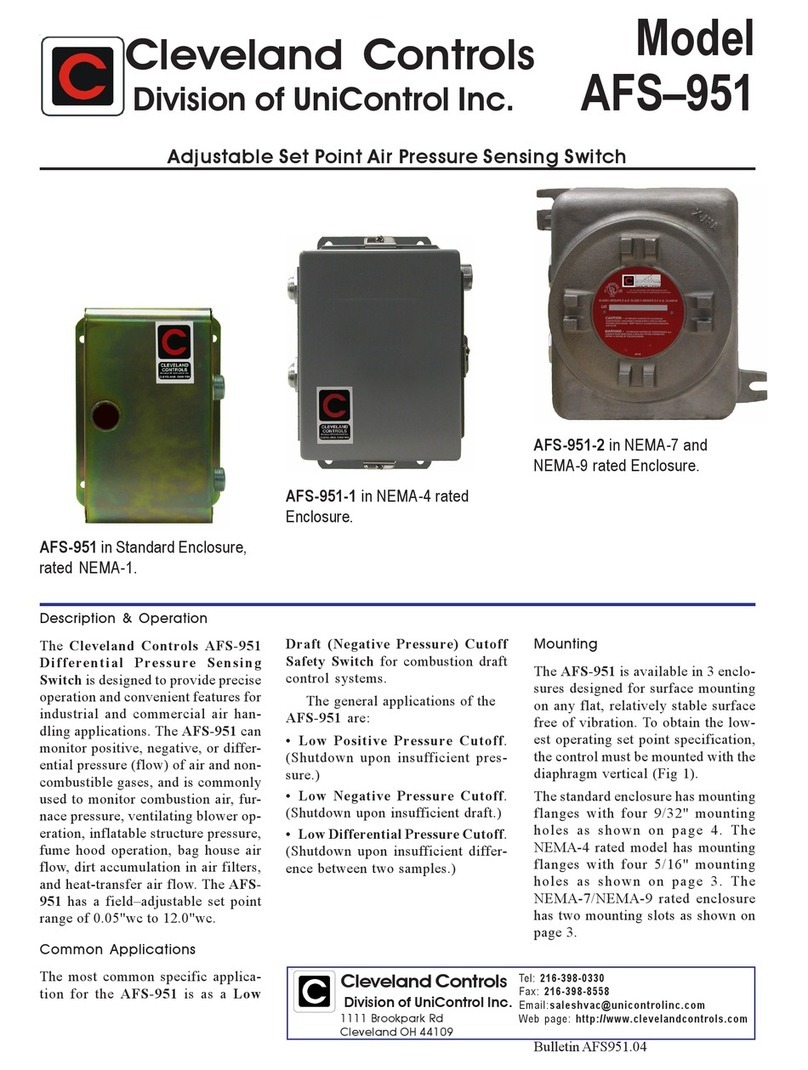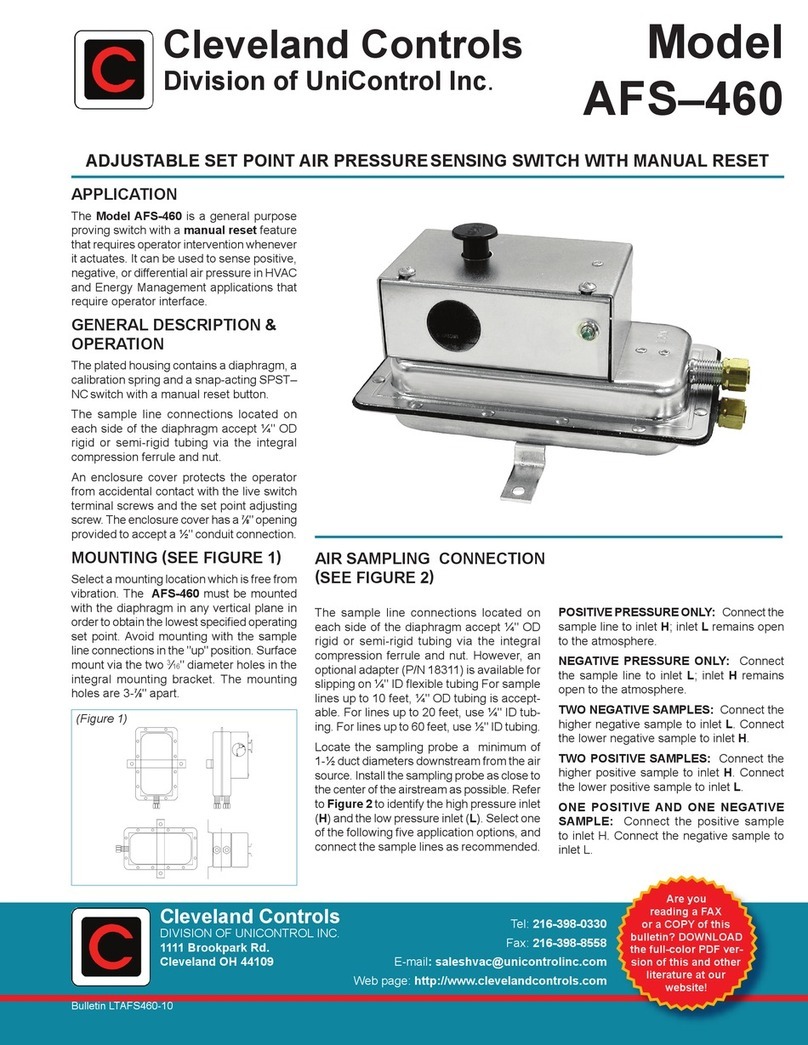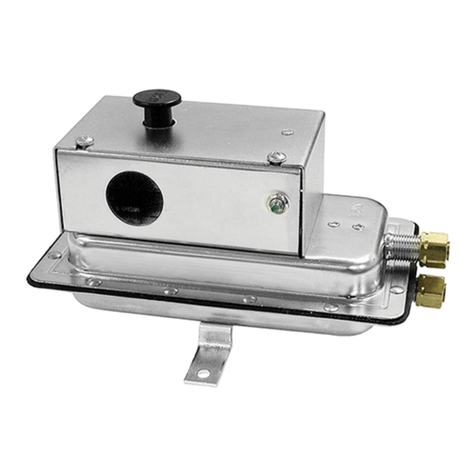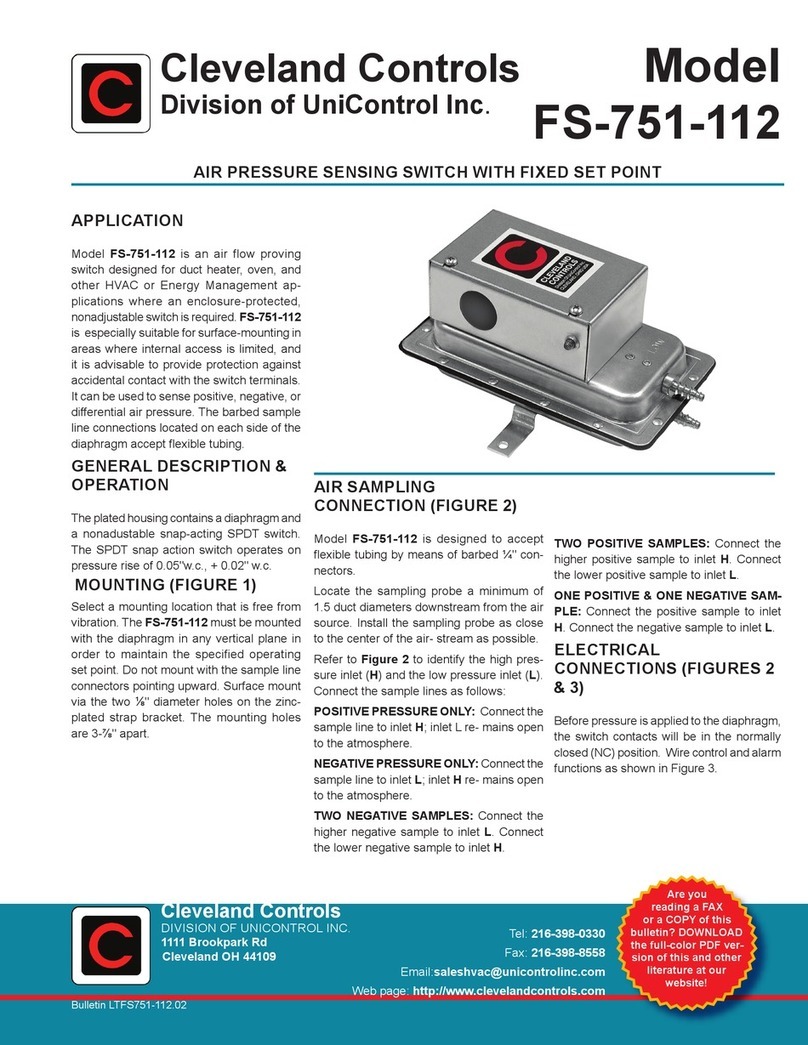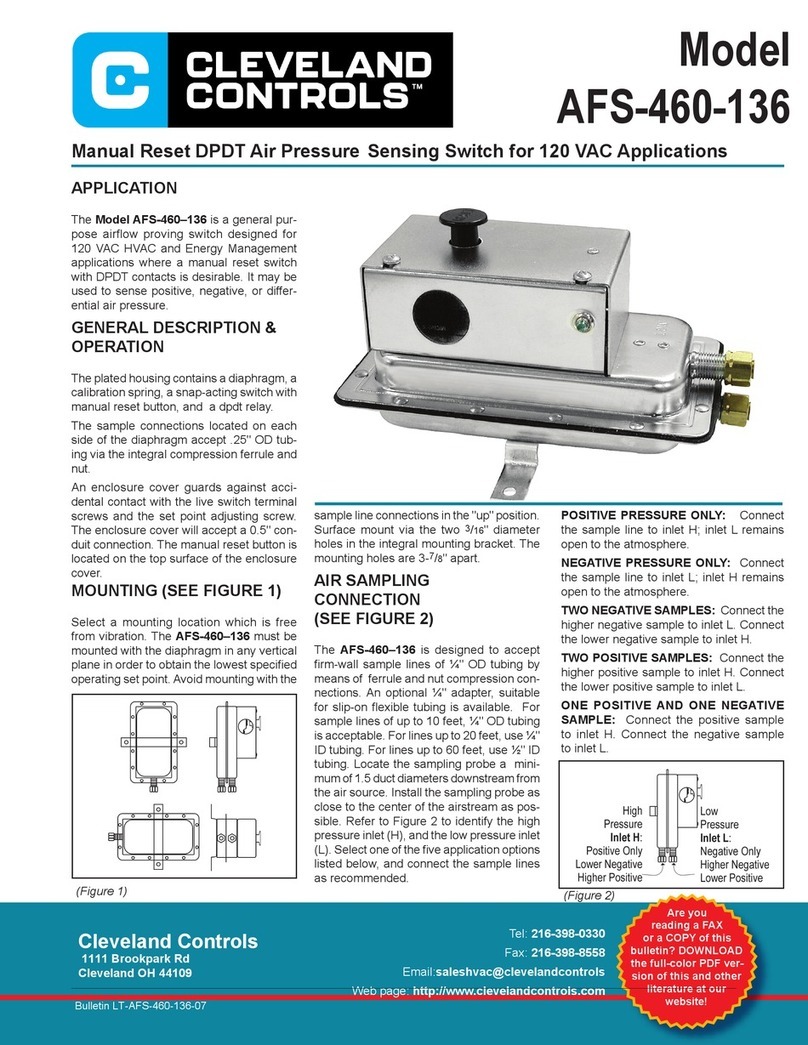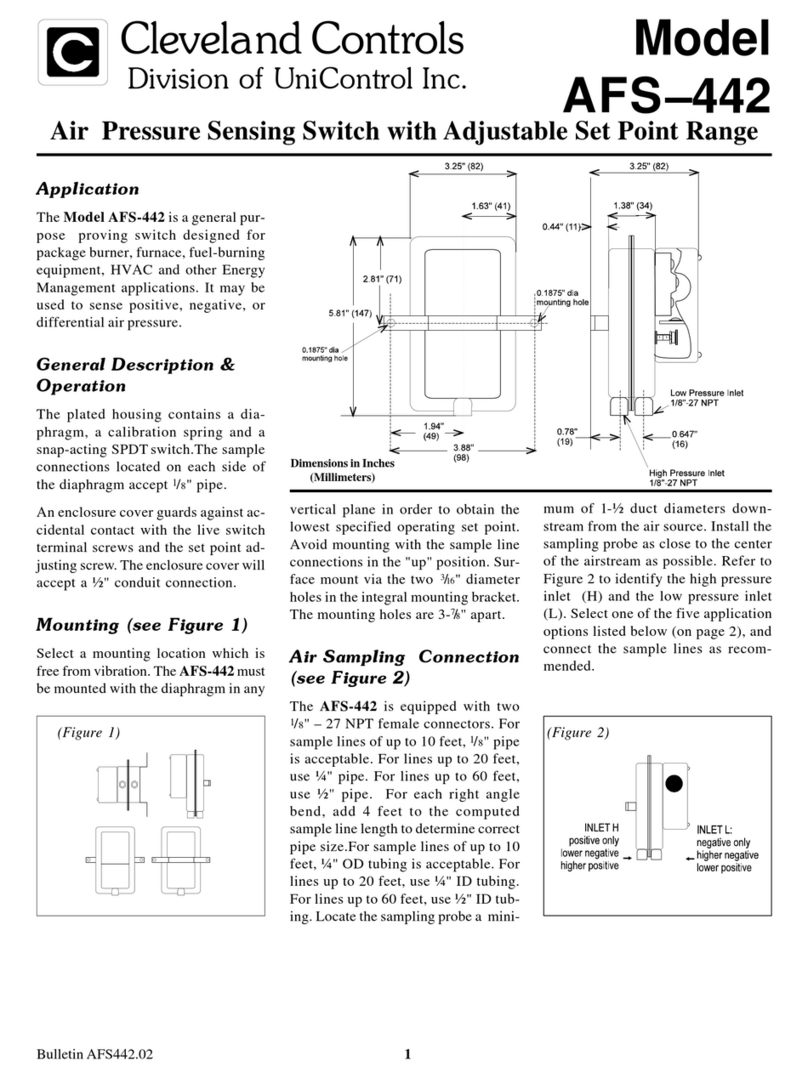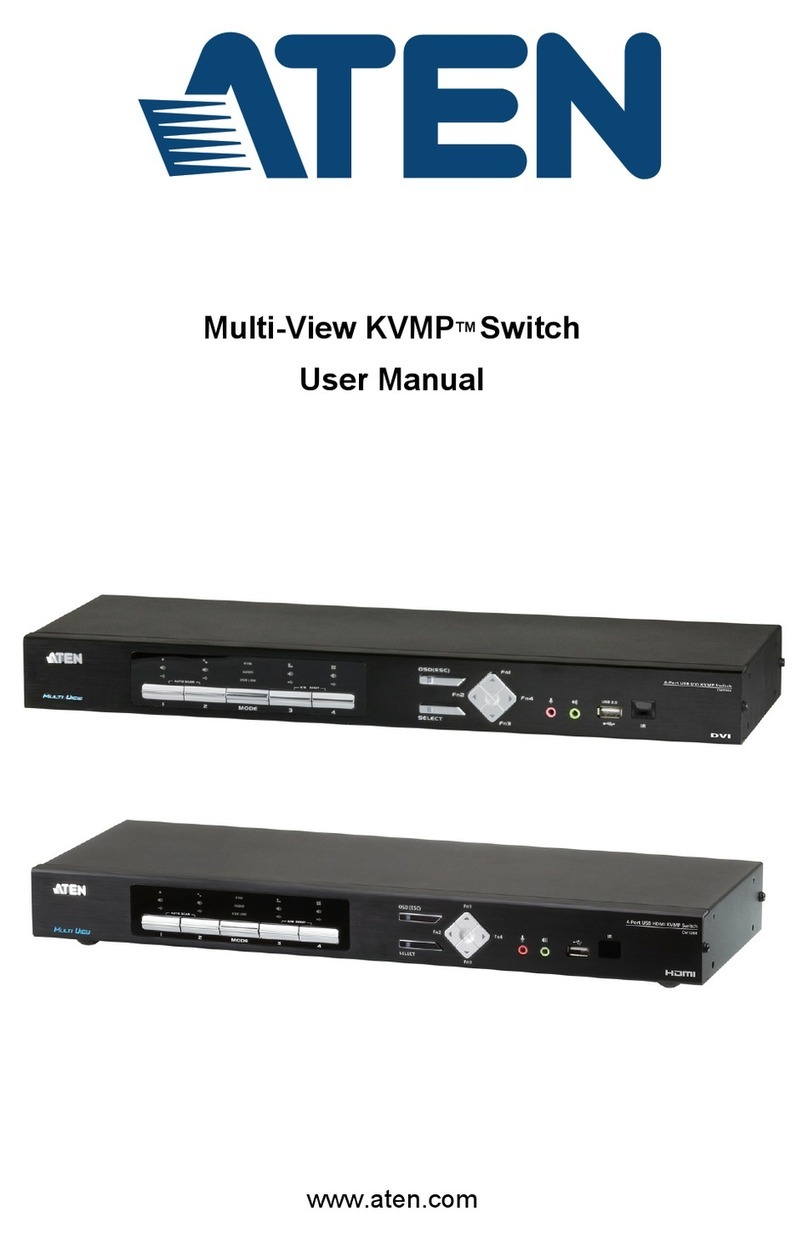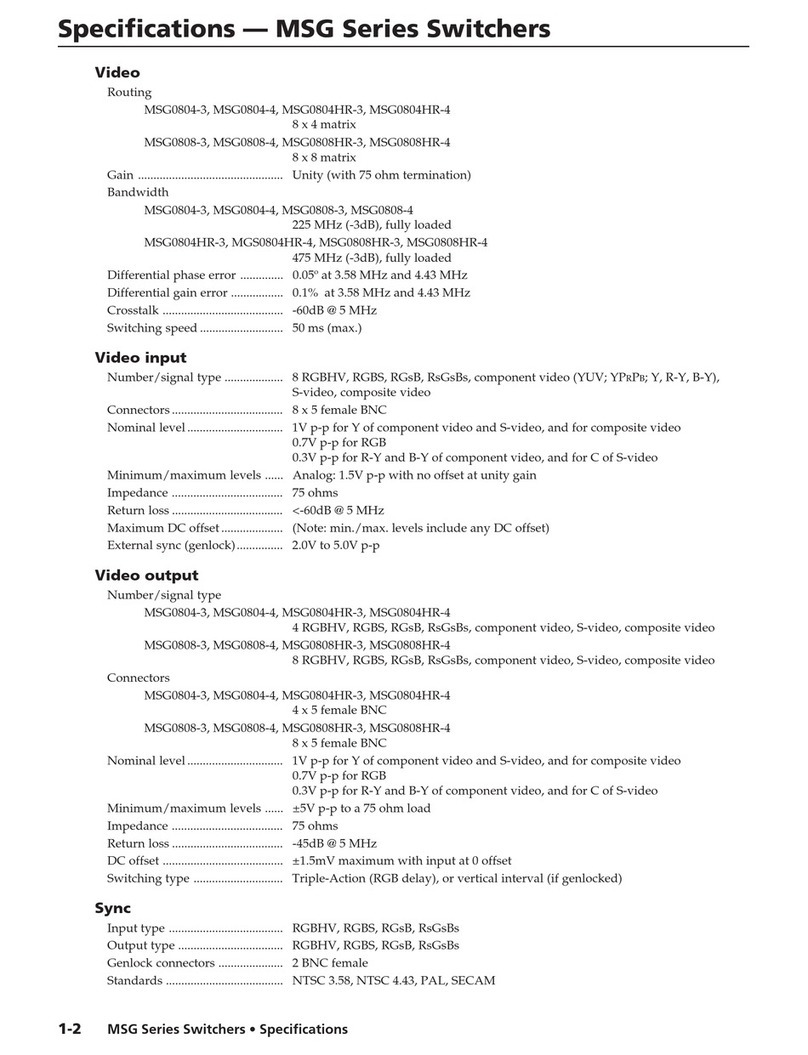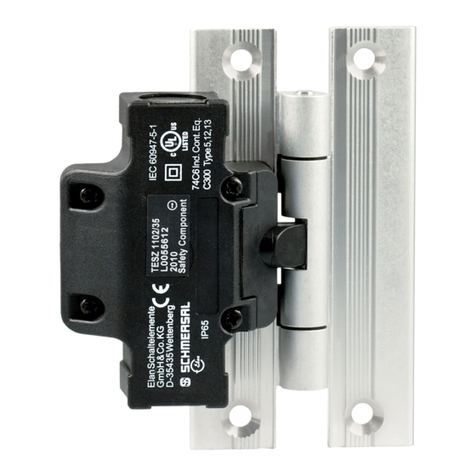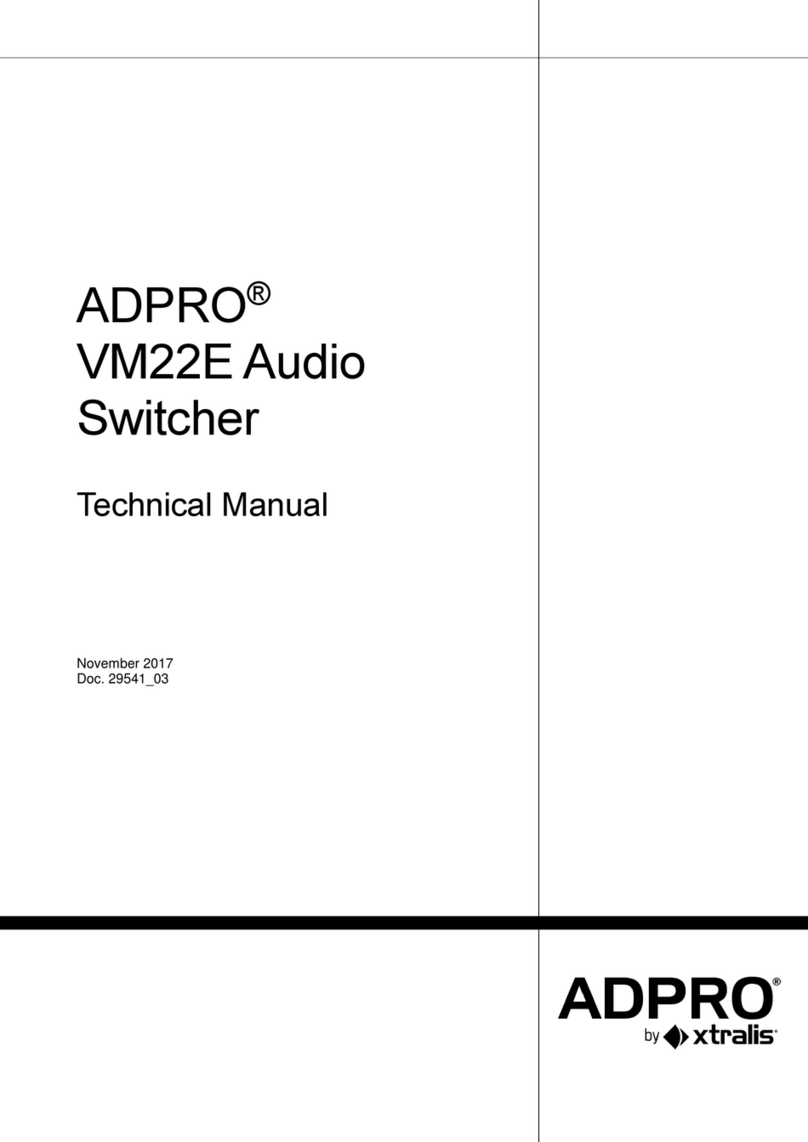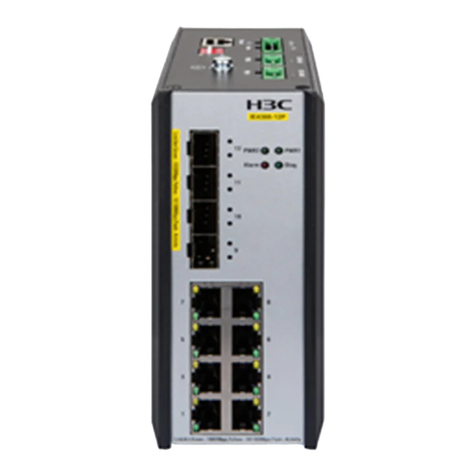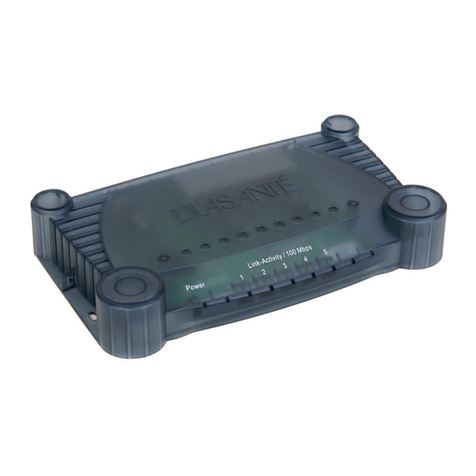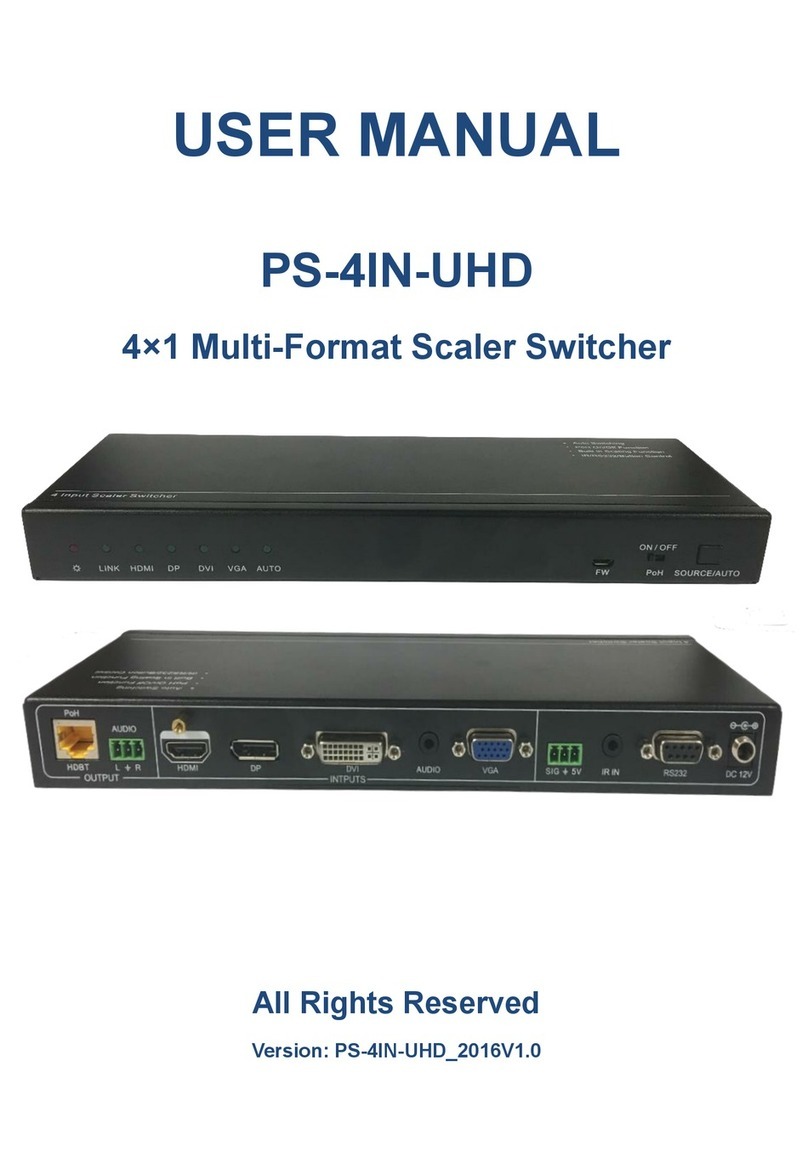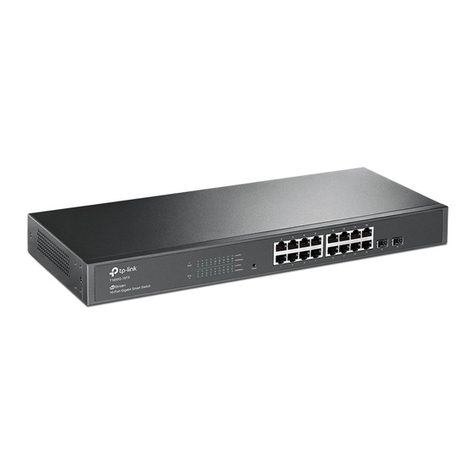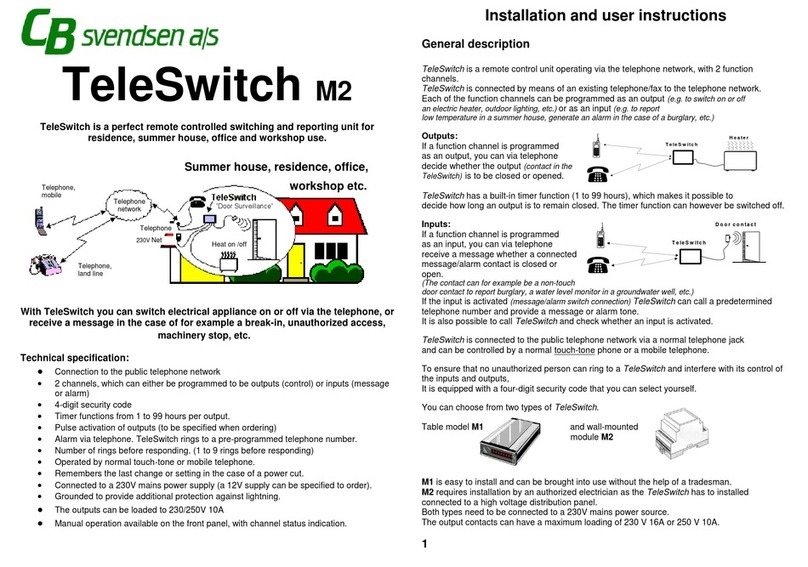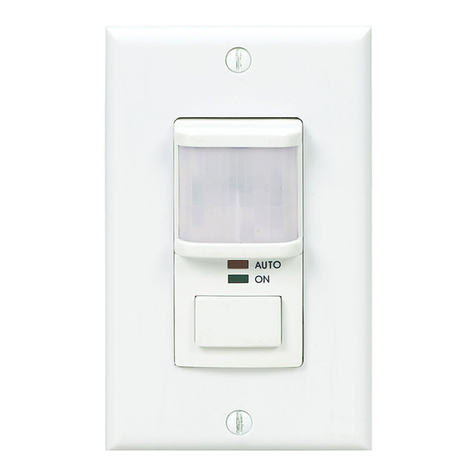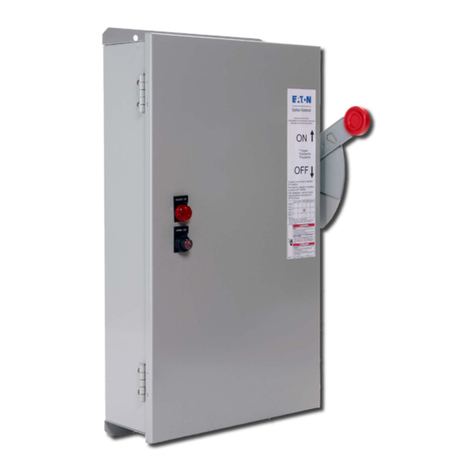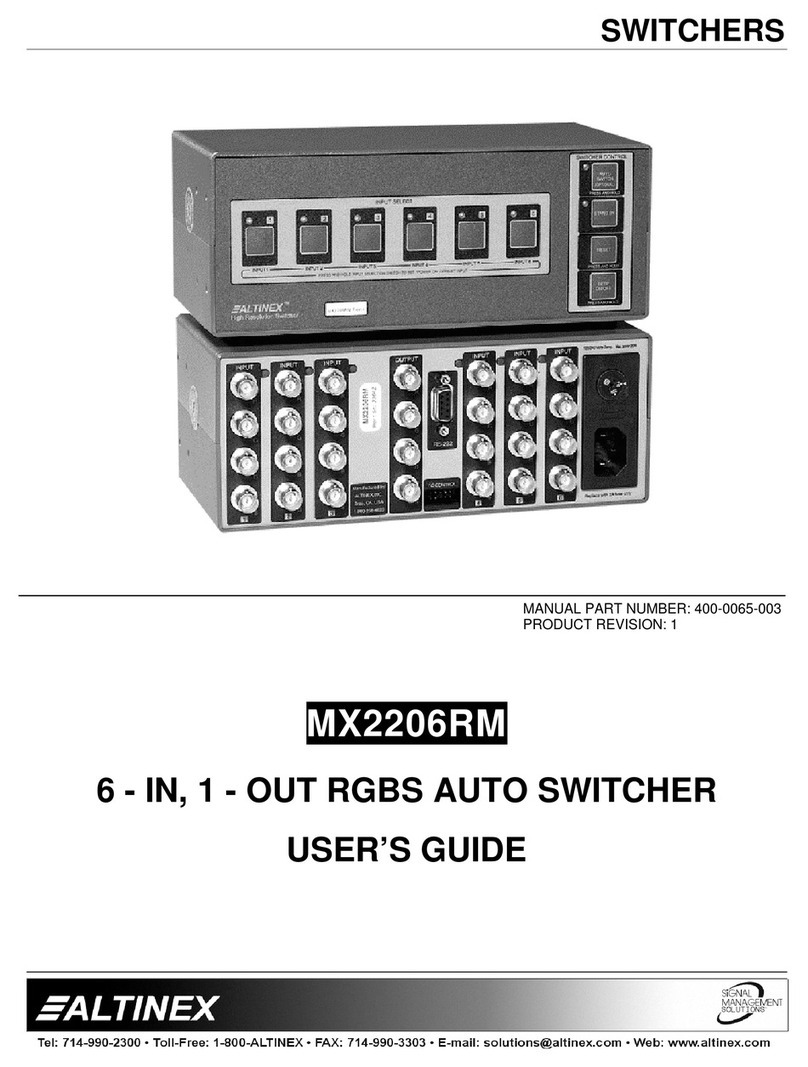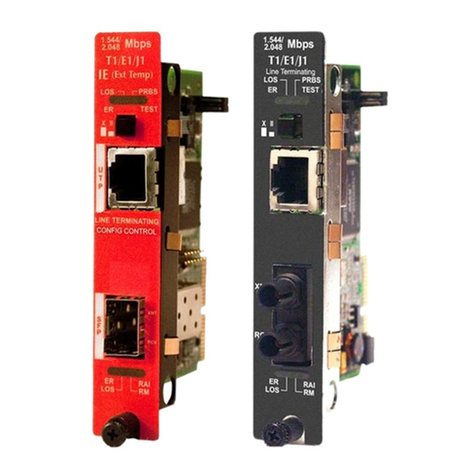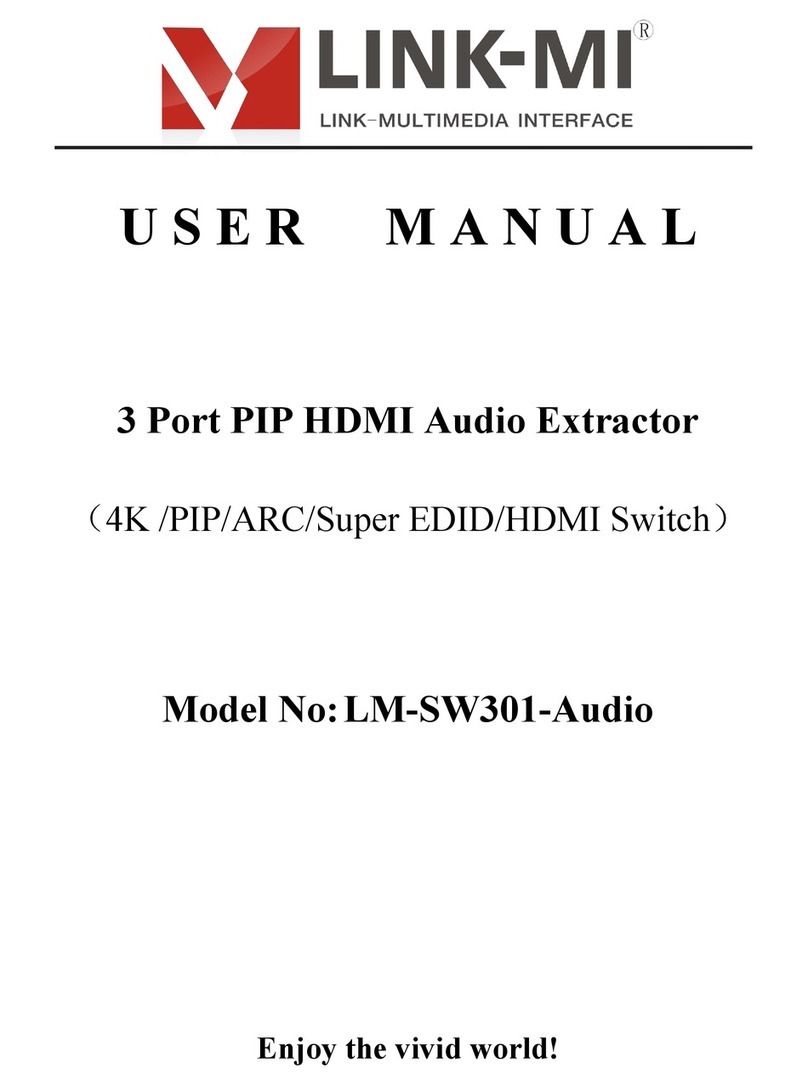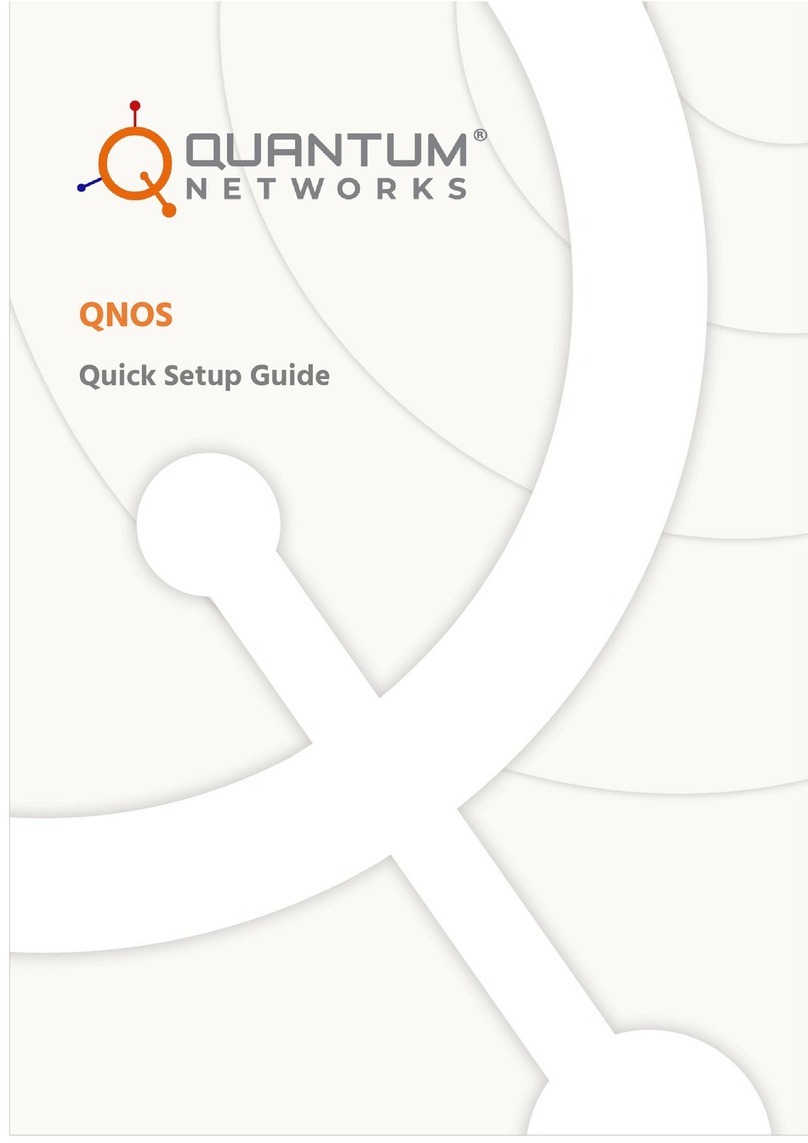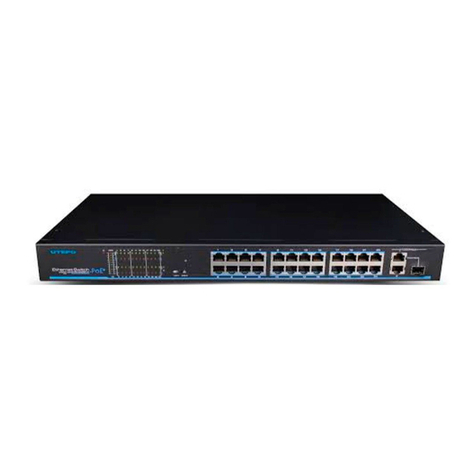
PIPING
The eld sample line connectors, two ¼"
- 18 NPT female ttings, labeled H (high)
and L (low), are located on the side of the
enclosure as shown in Figure 1.
For sample lines up to 10 ft., use ¼" OD
tubing or ⅛" pipe.
For sample lines up to 20 ft., use ¼" ID tub-
ing or ¼" pipe.
For sample lines up to 60 ft., use ½" ID
tubing or ½" pipe.
For sample lines up to 90 ft., use 3¾" ID
tubing or ¾" pipe.
For sample lines up to 120 ft., use 1" ID tub-
ing or 1" pipe. For each right angle bend, add
four feet to the computed line length in order
to determine correct pipe or tubing size.
If either sample line connector is vented to
the atmosphere, attach an elbow to it so
that the open end of the connector points
downward. This will help protect the switch
from contamination.
SAMPLE LINE
CONNECTIONS
Positive Pressure only:
Connect sample line to H;
Lremains open to the atmosphere.
Negative Pressure only:
Connect sample line to L:
Hremains open to the atmosphere.
Two Negative Samples:
Connect higher negative sample to L:
Connect lower negative sample to H.
Two Positive Samples:
Connect higher positive sample to H:
Connect lower positive sample to L.
One Negative and One Positive Sample:
Connect positive sample line to H:
Connect negative sample line to L.
ELECTRICAL CONNECTIONS
Three (3) terminals are provided for eld
wiring. Before pressure is applied to the
diaphragm, the switch contacts will be in
the normally closed position as shown in
Figure 2.
To Prove Excessive Air Flow or Pressure:
Connect Terminal 1 to a hot line, Terminal 2
to an alarm circuit (if desired), and Terminal
3to the control circuit.
To Prove Insufcient Air Flow or Pressure:
Connect Terminal 1 to a hot line, Terminal
2to the control circuit, and Terminal 3 to an
alarm circuit (if desired).
NOTE: When the switch is wired in this
manner, an alarm circuit will be energized
at start up, and will stay energized until
the set point of the air switch is satised.
To avoid nuisance alarm, a time delay, equal
to the amount of time required for pressure
to activate the air switch, should be wired
in series between Terminal 3 and the alarm
device.
FIELD ADJUSTMENTS
Field adjustments to the operating set point
are made by removing the protective plug
button on the side of the standard, NEMA1
rated enclosure and inserting a blade-type
screwdriver, at least 3 inches long to rotate
the set point adjustment screw.
The adjustment range is 0.03 ± .02" w.c.
to 2.0" w.c. To adjust the set point, turn
the adjusting screw counterclockwise until
motion has stopped. Next, turn the adjust-
ing screw 4 complete turns in a clockwise
direction to engage the spring.
From this point, the next 10 turns the
next ten turns will be used for the actual
calibration. Each full turn represents ap-
proximately 0.2" w.c. As the operating set
point increases, the switching differential
also increases from 0.02 ± 0.01" w.c. at
minimum set point, to approximately 0.1"
w.c. at maximum set point. Please note: To
properly calibrate an air pressure sensing
switch, a digital manometer or other mea-
suring device should be used to conrm the
actual set point.
SPECIFICATIONS
Models AFS-961,
AFS-961-1 & AFS-961-2
Air Pressure Sensing Switches
ELECTRICAL RATING:
300 VA pilot duty at 277 VAC
260 VA pilot duty at 240 VAC
130 VA pilot duty at 120 VAC
15 amp noninductive to 277 VAC.
CONDUIT OPENING:
⅞" diameter opening accepts ½" conduit tting.
ELECTRICAL SWITCH:
Contact Arrangement: SPDT NC. snap-action
switch. Contacts in a normally closed posi-
tion before pressure is applied.
CONTROL SET POINT / ADJUSTABLE
OPERATING RANGE:
Field-adjustable, 0.03 ±0.02 to 2.0" w.c.; (0.8 ±
0.5 to 51 mm w.c.; 0 to 0.07 psi)
SWITCH DIFFERENTIAL:
Progressive, increasing from 0.02 ± 0.01" w.c.
at minimum set point, to approximately 0.1"
w.c. at maximum set point (0.5 ±.25 mm to
approximately 20.3 mm).
MAXIMUM PRESSURE:
½ PSI (0.03 bar)
ELECTRICAL CONNECTIONS:
Numbered terminal panel
RECOMMENDED OPERATING POSITION:
Mount with the diaphragm in any vertical plane to
obtain the lowest operating set point.
OPERATING TEMPERATURE RANGE:
-40 TO 180 ºF (- 40 to 82 ºC)
SAMPLE LINE CONNECTORS:
Two ¼"-18 NPT female ttings.
APPROVALS:
UL listed, CE and CSA approved.
Pressure Conversion Table
1"wc = 0.0361psi or 0.0736"Hg
1"Hg = 0.491psi or 13.6" wc
1psi = 27.7"wc or 2.036"Hg
FIGURE 2: ELECTRICAL CONNECTIONS
FIGURE 1
